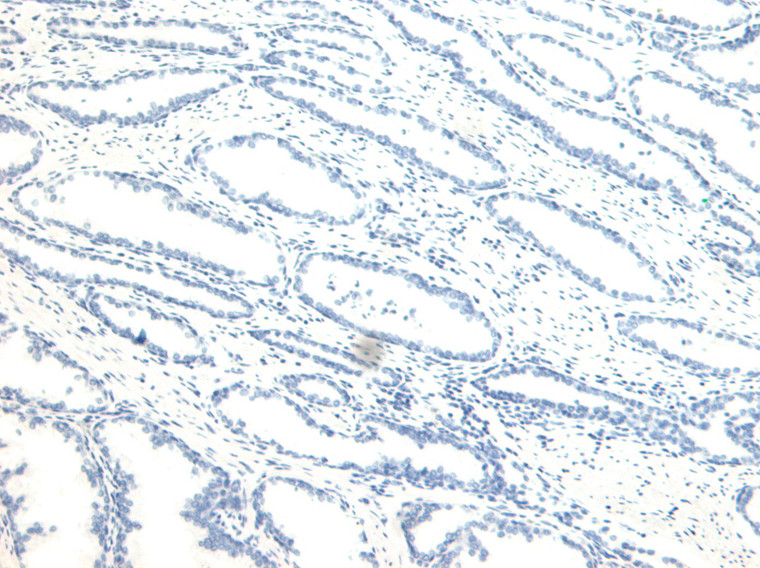| Host: |
Goat |
| Applications: |
Pep-ELISA/IHC/IF/FC |
| Reactivity: |
Human/Mouse/Dog/Cow |
| Note: |
STRICTLY FOR FURTHER SCIENTIFIC RESEARCH USE ONLY (RUO). MUST NOT TO BE USED IN DIAGNOSTIC OR THERAPEUTIC APPLICATIONS. |
| Short Description: |
Goat polyclonal antibody anti-NUMB (C-Term) is suitable for use in ELISA, Immunohistochemistry, Immunofluorescence and Flow Cytometry research applications. |
| Clonality: |
Polyclonal |
| Conjugation: |
Unconjugated |
| Isotype: |
IgG |
| Formulation: |
0.5 mg/ml in Tris saline, 0.02% sodium azide, pH7.3 with 0.5% bovine serum albumin. NA |
| Purification: |
Purified from goat serum by ammonium sulphate precipitation followed by antigen affinity chromatography using the immunizing peptide. |
| Concentration: |
0.5 mg/mL |
| Dilution Range: |
IHC-6-8µg/mlIF-Strong expression of the protein seen in the cell junctions/plasma membrane and cytoplasm of A431 and NIH3T3 cells. 10µg/mlELISA-antibody detection limit dilution 1:128000. |
| Storage Instruction: |
Store at-20°C on receipt and minimise freeze-thaw cycles. |
| Gene Symbol: |
NUMB |
| Gene ID: |
8650 |
| Uniprot ID: |
NUMB_HUMAN |
| Immunogen Region: |
C-Term |
| Accession Number: |
NP_001005743.1; 001005744.1; NP_003735; NP_001005745.1 |
| Specificity: |
This antibody is expected to recognize all reported isoforms (NP_001005743.1, 001005744.1, NP_003735, NP_001005745.1). It is also likely to cross-react with Numblike (NUMBL, GeneID: 9253) which has a very similar C-Terminus, although this has not yet |
| Immunogen Sequence: |
PFSSDLQKTFEIEL |
| Function | Regulates clathrin-mediated receptor endocytosis. Plays a role in the process of neurogenesis. Required throughout embryonic neurogenesis to maintain neural progenitor cells, also called radial glial cells (RGCs), by allowing their daughter cells to choose progenitor over neuronal cell fate. Not required for the proliferation of neural progenitor cells before the onset of neurogenesis. Also involved postnatally in the subventricular zone (SVZ) neurogenesis by regulating SVZ neuroblasts survival and ependymal wall integrity. May also mediate local repair of brain ventricular wall damage. |
| Protein Name | Protein Numb HomologH-NumbProtein S171 |
| Database Links | Reactome: R-HSA-2122948Reactome: R-HSA-437239Reactome: R-HSA-5610780Reactome: R-HSA-5632684 |
| Cellular Localisation | Cell MembranePeripheral Membrane ProteinCytoplasmic SideEndosome MembraneLocalizes To Perinuclear Endosomes In An Aak1-Dependent Manner |
| Alternative Antibody Names | Anti-Protein Numb Homolog antibodyAnti-H-Numb antibodyAnti-Protein S171 antibodyAnti-NUMB antibodyAnti-C14orf41 antibody |
Information sourced from Uniprot.org
12 months for antibodies. 6 months for ELISA Kits. Please see website T&Cs for further guidance











